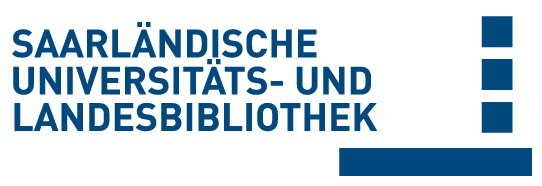Please use this identifier to cite or link to this item:
doi:10.22028/D291-45485 | Title: | Überprüfung der Stabilität von Behandlungsergebnissen nach kieferorthopädischer Frühbehandlung |
| Author(s): | Loef, Ines Caroline |
| Language: | German |
| Year of Publication: | 2024 |
| Place of publication: | Homburg/Saar |
| DDC notations: | 610 Medicine and health |
| Publikation type: | Dissertation |
| Abstract: | Abstract
The aim of this study is to assess new or recurring orthodontic treatment need after
successfully completed early orthodontic treatment. Furthermore, it will be investigated, if the
results of early orthodontic treatment can be considered as an effective prevention. It also
needs to be clarified, if the three indices, the Orthodontic Indication Group (KIG), the Index of
Orthodontic Treatment Need (IOTN) and the Peer Assessment Rating (PAR), can be used to
assess early orthodontic treatment. For this purpose, 70 patients were evaluated at three
specific points in time, before early orthodontic treatment (t0), after successful early treatment
(t1) and as part of a recall (t2). The three indices were applied and statistically evaluated at all
times.
The result of the KIG showed that frontal crossbite is the most common indication for early
orthodontic treatment with 44,3%, followed by lateral crossbite with 41,4%. In the second
treatment phase eruption disorders represented as the largest group with 20%, followed by
reduced overjets with 17,1%. At the end of early treatment, 87,1% of the patients had no
orthodontic treatment need according to the KIG guidelines. For 22% of the patients no
treatment need was confirmed in the late mixed dentition. There seems to be a relation
between transverse deficit at the beginning of the examination t0 and tooth retention at the
follow up examination t2. A connection could also be established between reduced overjet at
t0 and lack of space at t2. Analogous to the KIG, the frontal or lateral crossbite was most
common with 52,9% when applying the IOTN. After early treatment 51,5% of the patients had
no treatment need according to the IOTN guidelines. This was confirmed in ten patients at t2.
The most common anomaly at t2 was retention with 21,4%, followed by crossbites with 15,1%
and contact point displacements >2 ≤ 4mm with 12,9%. Again, a connection between an initial
crossbite and a subsequent retention can be seen. The mean starting PAR value was 13.36
points. 53 patients showed an improvement in the PAR score from t0 to t1, the PAR score of
41 patients was lower at time t2 than at the beginning. In particular, the improvement in the
transverse and sagittal occlusion between t0 and t1 was confirmed at time t2. Only the
displacement scores in both the maxilla and the mandible got worse.
The results of the study reveal the preventive nature of early orthodontic treatment, which is in
line with the recommendations of the German Association for Orthodontics. However, the
assessment is limited by the limited applicability of the indices in the early mixed dentition. Deutsche Zusammenfassung Ziel dieser Arbeit ist die Beurteilung eines neuen oder wiederkehrenden kieferorthopädischen Behandlungsbedarfs nach erfolgreich abgeschlossener Frühbehandlung. Weiterhin soll untersucht werden, ob das Behandlungsergebnis einer Frühbehandlung als erfolgreiche Prävention gelten kann. Auch gilt es zu klären, ob die drei international anerkannten Indizes Kieferorthopädische Indikationsgruppen (KIG), Index of Orthodontic Treatment Need (IOTN) und Peer Assessment Rating (PAR) zur Beurteilung der kieferorthopädischen Frühbehandlung angewendet werden können. Hierfür wurden 70 Patienten zu drei Behandlungszeitpunkten, vor kieferorthopädischer Frühbehandlung, nach erfolgreicher Frühbehandlung und im Rahmen eines Recalls ausgewertet. Es wurden zu allen Zeitpunkten die drei Indizes erhoben und statistisch ausgewertet. Bei den Ergebnissen zum KIG zeigte sich mit 44,3% der frontale Kreuzbiss, gefolgt vom lateralen Kreuzbiss mit 41,4% als häufigste Indikation für die Frühbehandlung. Bei der Hauptbehandlung stellte die Indikation Durchbruchstörungen die größte Gruppe mit 20% dar, gefolgt von einer verkleinerten sagittalen Frontzahnstufe mit 17,1%. Bei Abschluss der Frühbehandlung konnte bei 87,1% der Patienten kein Behandlungsbedarf nach KIG Richtlinien festgestellt werden. Bei 22% der Patienten konnte dies auch im späten Wechselgebiss bestätigt werden. Bei Betrachtung der KIG-Einstufungen zwischen den drei Zeitpunkten konnte ein Zusammenhang zwischen einem transversalen Defizit zu Beginn der Untersuchung und einer Retention bei der Nachuntersuchung t2 festgestellt werden. Es konnte auch ein Zusammenhang zwischen einer verkleinerten sagittalen Frontzahnstufe zu t0 und einem Platzdefizit zu t2 festgestellt werden. Analog zum KIG stellte sich beim IOTN zu Beginn der Frühbehandlung der frontale bzw. laterale Kreuzbiss mit 52,9% am häufigsten dar. Bei t1 konnte bei 51,5% der Patienten kein Behandlungsbedarf festgestellt werden. Dies konnte bei zehn Patienten zum Zeitpunkt t2 bestätigt werden. Die häufigste Anomalie zum Zeitpunkt t2 war mit 21,4% eine Retention, gefolgt von einem Kreuzbiss mit 15,7% und einer Kontaktpunktverschiebung >2mm, jedoch ≤4mm mit 12,9%. Auch hier zeigte sich der Zusammenhang zwischen einem anfänglichen Kreuzbiss und einer späteren Retention. Der durchschnittliche Ausgangs-PAR-Wert lag bei 13,36 Punkten. 53 Patienten zeigten eine Verbesserung der PAR-Summe bei t1, bei 41 Patienten wurde auch zum Zeitpunkt t2 eine geringere PAR-Summe ermittelt als zu Beginn. Vor allem die Verbesserung der Okklusion transversal und sagittal zwischen t0 und t1 konnte zum Zeitpunkt t2 bestätigt werden. Lediglich eine Verschlechterung für die Kontaktpunktabweichung war sowohl im Oberkiefer als auch im Unterkiefer erkennbar. Die Ergebnisse der Studie lassen den präventiven Charakter der kieferorthopädischen Frühbehandlung erkennen, was sich mit den Empfehlungen der Deutschen Fachgesellschaft für Kieferorthopädie e.V. deckt. Allerdings wird die Beurteilung durch die nur bedingte Anwendbarkeit der Indizes im frühen Wechselgebiss limitiert. |
| Link to this record: | urn:nbn:de:bsz:291--ds-454851 hdl:20.500.11880/40183 http://dx.doi.org/10.22028/D291-45485 |
| Advisor: | Lisson, Jörg Alexander |
| Date of oral examination: | 14-May-2025 |
| Date of registration: | 27-Jun-2025 |
| Faculty: | M - Medizinische Fakultät |
| Department: | M - Zahn-, Mund- und Kieferheilkunde |
| Professorship: | M - Prof. Dr. Jörg Lisson |
| Collections: | SciDok - Der Wissenschaftsserver der Universität des Saarlandes |
Files for this record:
| File | Description | Size | Format | |
|---|---|---|---|---|
| Loef_I_Dissertation 13.10.24final ohne Lebenslauf.pdf | Dissertation | 1,32 MB | Adobe PDF | View/Open |
Items in SciDok are protected by copyright, with all rights reserved, unless otherwise indicated.

